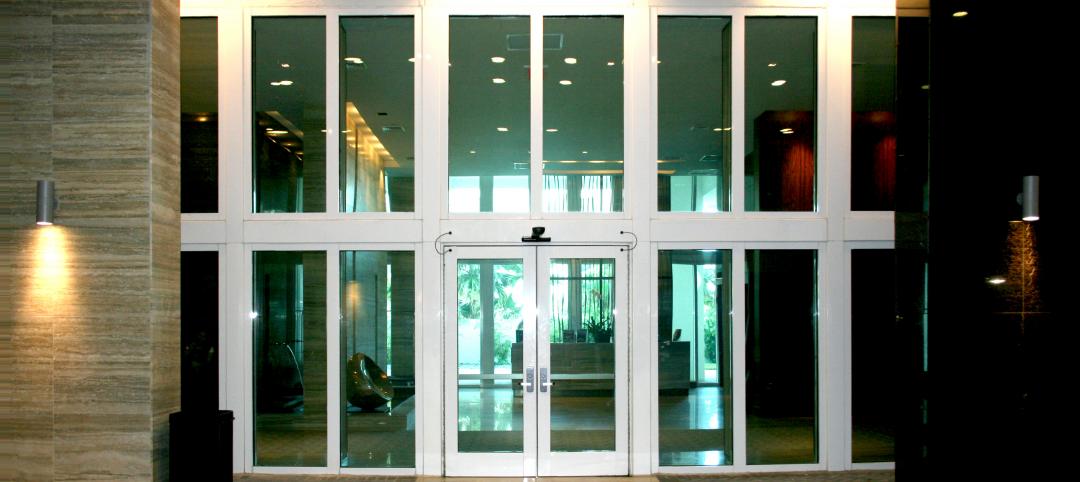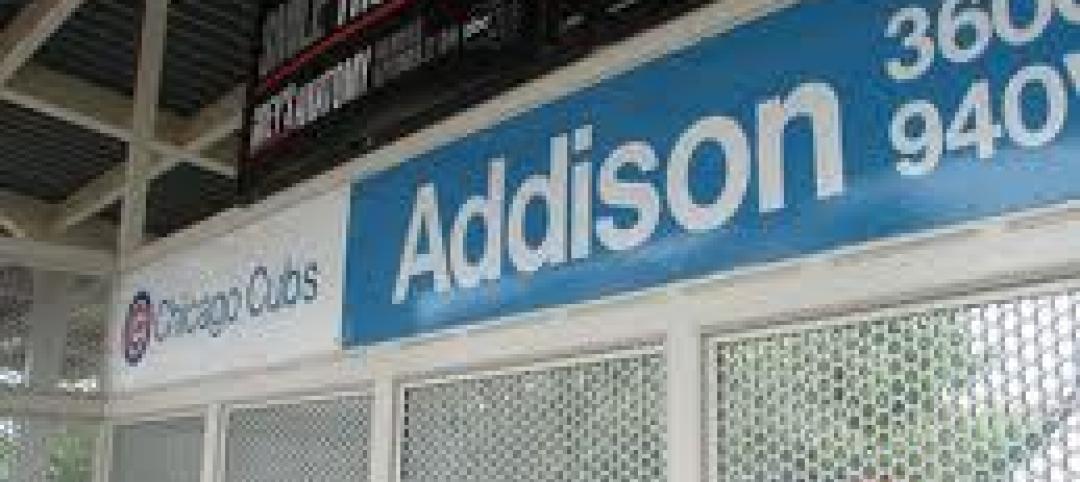Growth in numbers, locations, types and sizes all mark progress on the state of commercial zero net energy (ZNE) buildings—ultra-efficient buildings that generate as much power from onsite renewable energy sources as they consume in a year, according to a report from New Buildings Institute (NBI).
Of buildings surveyed across North America, the report finds the number of buildings achieving or pursuing ZNE have more than doubled since the last study was released in 2012.
In addition to the 2014 Getting to Zero Status Update: A review of the projects, policies and programs driving zero net energy commercial buildings, NBI released an interactive map showing the geographic spread, square footage and other characteristics of all buildings verified by NBI to have achieved zero net energy performance.
NBI is a national nonprofit working to improve the energy performance of commercial buildings. ZNE verification of buildings is based on review of one-year of measured energy data including building energy consumption and renewable energy production, or other valid documentation from a third-party entity.
CLICK HERE TO VIEW INTERACTIVE VERSION
The 2014 list of ZNE verified buildings includes 32 buildings and one district for a total of 33 projects. These projects are located in 36 states covering all climate zones and include a variety of building types. View interactive format.
“While this remains a relatively small set of buildings, the growth and diversity are important indicators for what we should expect in the coming years,” said Ralph DiNola, executive director of New Buildings Institute. “The future is now for ZNE buildings and we are seeing this play out in the shift from a handful of projects primarily in the public domain, to private companies such as Walgreens and TD Bank embarking on ZNE building projects and using those experiences to inform future development.”
NBI tracks the development of ZNE buildings in North America throughout the year. At report press time, NBI had identified and verified 33 ZNE projects including 32 buildings and one district (a group of buildings), an additional 127 projects that were working toward ZNE but did not have a full year of energy use yet to verify net-zero, and 53 buildings that had verified high levels of efficiency comparable to zero net energy performance, but without sufficient onsite renewable generation, for a grand total of 213 buildings.
This is more than double the number of buildings included in NBI’s inaugural ZNE report, which identified 21 verified and 39 emerging ZNE buildings, plus 39 ultra-efficient structures for a total of 99 buildings.
“We are proud to support NBI on this important ZNE study,” said David Terry, Executive Director of the National Association of State Energy Officials (NASEO). “We continue to see states across the country integrating cost-effective ZNE strategies into long-term policy, program, and energy planning goals. The aspirational nature of ZNE buildings captures the attention and imagination of everyday citizens, business leaders, and government officials especially in sectors such as schools and public buildings.”
NASEO and NBI work together to support policy leaders looking to zero net energy as a strategy for meeting carbon reduction goals.
Key report findings include:
• ZNE is achievable in all regions and climate zones: ZNE buildings exist in 36 states and two Canadian provinces covering all eight U.S. Department of Energy climate zones.
• ZNE works for many building types and sizes: The 2014 report includes a wide diversity of building types, including K-12 schools, universities and offices. New to the report this year are low-rise apartment buildings and emerging laboratory buildings. More than 25% of the ZNE and ZNE emerging buildings referenced in this report are larger than 50,000 sq. ft., and half of those are over 100,000 sq. ft.
• ZNE districts are a growing trend: In addition to individual buildings, there is a new trend of communities and campuses committed to groups of ZNE buildings to leverage resources. NBI identified 18 ZNE Districts in the report, with the U.S. Army and several universities as the leading entities.
• Private sector increase in ZNE development: 26% of the verified ZNE and ZNE emerging buildings on this year’s list were privately developed, including TD Bank in Fort Lauderdale, Florida, DPR Construction in Phoenix, Arizona and the recently-opened Walgreens retail store in Evanston, Illinois.
• ZNE is achievable in existing buildings: 24% of the verified ZNE buildings in the report were renovation projects, demonstrating the potential for ZNE during major building renewals and expanding the potential floorspace for ZNE well beyond just new construction in North America.
• Large share of ZNE projects are education buildings: Consistent with the last report, education buildings such as K-12 schools and universities, make up the single largest category in this year’s report at 1/3 of all ZNE buildings, such as the Center for Energy Efficient Design (CEED) – an award-winning ZNE learning laboratory for middle school students in Rocky Mount, Virginia.
“The beauty of the Center for Energy Efficient Design as an educational facility is that it's not just a theory or picture in a book. Our students actually live and learn in the space,” said Neil Sigmon, CEED instructor and project leader. “Many of our students have gone on to careers in architecture and engineering. This is where they got their start."
NBI will host a webinar on Thursday, Jan. 16 from 10-11:30am Pacific to share report findings.
About New Buildings Institute | www.newbuildings.org
New Buildings Institute New Buildings Institute (NBI) is a nonprofit organization working to improve the energy performance of commercial buildings. We work collaboratively with commercial building market players—governments, utilities, energy efficiency advocates and building professionals—to remove barriers to energy efficiency, including promoting advanced design practices, improved technologies, public policies and programs that improve energy efficiency. NBI also develops and offers guidance to individuals and organizations on designing and constructing energy-efficient buildings through our Advanced Buildings® suite of tools and resources.
Related Stories
| Sep 23, 2011
Fire and hurricane rated glazed wall assemblies installed at multi-family residence in Florida
Fire and hurricane assemblies meet design and code requirements.
| Sep 23, 2011
ABI turns positive after four monthly declines
On the heels of a period of weakness in design activity, the Architecture Billings Index (ABI) took a sudden upturn in August.
| Sep 23, 2011
Under 40 Leadership Summit
Building Design+Construction’s Under 40 Leadership Summit takes place October 26-28, 2011 Hotel at the Monteleone in New Orleans. Discounted hotel rate deadline: October 2, 2011.
| Sep 20, 2011
Jeanne Gang wins MacArthur Fellowship
Jeanne Gang, a 2011 MacArthur Fellowship winner described by the foundation as "an architect challenging the aesthetic and technical possibilities of the art form in a wide range of structures."
| Sep 20, 2011
Francis Cauffman wins two IDA design awards
The PA/NJ/DE Chapter of the International Interior Design Association (IIDA) has presented the Francis Cauffman architecture firm with two awards: the Best Interior Design of 2011 for the W. L. Gore offices in Elkton, MD, and the President’s Choice Award for St. Joseph’s Regional Medical Center in Paterson, NJ.
| Sep 20, 2011
PPG, Pleotint to co-market environmentally adaptive glazing technology with low-e glass
Laminated between two lites of glass, SRT interlayer may be used monolithically or within an insulating glass unit.
| Sep 19, 2011
Portland team hired as LEED and commissioning consultants for $5.5B downtown sustainable project in Qatar
The $5.5 billion sustainable downtown regeneration project underway by Msheireb Properties will transform a 76 acres site at the centre of Doha, Qatar’s capital city, recreating a way of living that is rooted in Qatari culture, attracting residents back to the city center and reversing the trend for decentralization.
| Sep 16, 2011
Chicago Architecture Foundation partners with seven renowned architects to re-imagine Chicago neighborhoods
Design on the Edge presents plans created by seven teams of nine Chicago-based architects to reimagine seven of the city’s neighborhoods to encourage street life, retail districts and dense housing around the existing “L” transit system.
| Sep 14, 2011
USGBC L.A. Chapter's Green Gala features Jason McLennan as keynote speaker
The Los Angeles Chapter of the nonprofit USGBC will launch its Sustainable Innovation Awards this year during the chapter's 7th Annual Green Gala on Thursday, November 3.
















